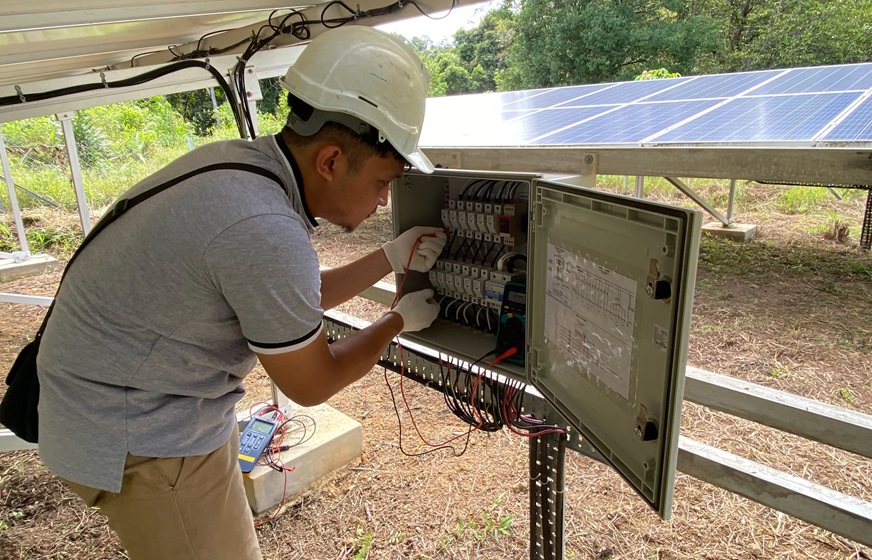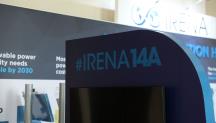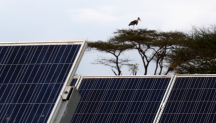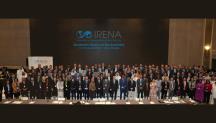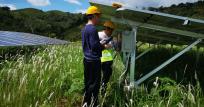
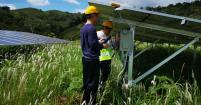
In Rural Malaysia, Local Communities Are Empowered to Develop and Maintain Renewable Power
Newsletter
Unjam Anak Makam and Maja Anak Mabang never imagined that they would play a role in bringing light to their villages in Sarawak, Malaysia. As graduates of a government certification training scheme after finishing their secondary schools, Unjam and Maja are some of the local youth who joined Ecogreen, one of the several companies assigned to develop solar plants under the framework of Sarawak Alternative Rural Electrification Scheme (SARES).

SARES is an initiative of the government of Sarawak, a Malaysian state in the eastern part of the country. Implemented by the state-owned company Sarawak Energy Berhad, SARES aims to electrify Sarawak’s rural areas with renewable energy by engaging local communities.
Unjam’s and Maja’s first encounter with solar energy was during the construction of solar plants in their villages. Sarawak Energy Berhad appointed Ecogreen Solar Engineering as the contractor of the project, which then hired members of the surrounding community for the job. Unjam and Maja joined the team as project workers.
“I am grateful to be involved in the project. This is my first job experience after finishing my construction education with the government’s Construction Industry Development Board programme. They provided training for new technicians like me, so I gained a lot of new skills and knowledge with this job,” Maja said.
Initially, the project supervisor assigned Unjam and Maja to do regular work such as handling transportation of materials and laying cables. Because they showed good work performance, they were gradually trained to do electrical wiring and solar system installation. They also learned about battery technology through on-the-job training.
Since then, they have been employed as permanent staff of Ecogreen and involved in multiple SARES’ solar projects across Sarawak. Both have also gone through formal training and are now certified in solar system installation. These days, Unjam and Maja are even able to assist in delivering basic solar system maintenance training to the community, contributing further in empowering the villagers to maintain the solar systems themselves.
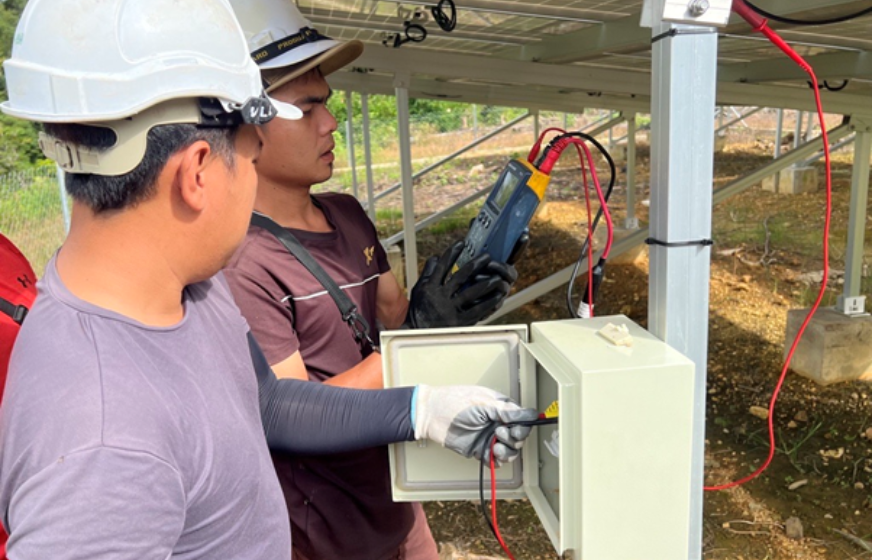
According to a new report by the International Renewable Energy Agency (IRENA) titled Socio-economic footprint of the energy transition: Southeast Asia, the success of a just and inclusive energy transition in the region depends on how local workforces are empowered to actively participate in the decarbonisation of the economy. This requires well-designed capacity development, training and co-operation across cross-cutting concerns such as gender equity, vulnerable groups and local communities.
Under IRENA’s 1.5°C Scenario, Southeast Asia could experience average annual gross domestic product growth of 3.4% higher compared to the Planned Energy Scenario over the period of 2021-2050, with substantial job creation potential. Renewable energy deployment in the region is expected to account for 5.1 million jobs out of a total of 11 million jobs in the whole energy sector by 2050 under the 1.5°C Scenario. Solar photovoltaics (PV) technologies in particular will account for around 34% renewable energy jobs by 2030 (1.3 million jobs) and 39% (2 million jobs) by 2050 in Southeast Asia.
The new report highlights how Malaysia is an important player in the solar PV industry as the fourth-largest manufacturer of solar PV in the world. With a module production capacity of roughly 8.9 gigawatt (GW) as of 2019, Malaysia recorded 16,150 direct PV jobs that year. This amount could double if indirect employment were considered. As module capacity has expanded to about 14 GW in 2022, Malaysia is likely to record an increase in solar PV employment. With a programme like SARES that seeks to encourage local participations, those socio-economic benefits could reach rural communities.
There is more to be done if Malaysia seeks to reap the socio-economic benefits of renewable technologies and specifically, solar PV. According to IRENA’s Malaysia Energy Transition Outlook, out of its 337 GW solar PV potential, the country has only installed 1.8 GW capacity by the end of 2021. The installed solar power in Unjam’s and Maja’s villages have the capacity of 12.47 kilowatt peak (kWp) and 13.8 kWp, respectively, electrifying around 25 households in total.
“Back in my school days, we used to study in the dark. Today, I am happy to see villagers experience lasting electricity, allowing children to study late in the evening and families to store food in the refrigerators. We can also save money since we do not have to buy fuels for diesel generators or kerosene lamps,” said Maja. On his part, when asked about his hopes for his community, Unjam said “I hope to see more solar systems in other rural areas, creating jobs for villagers and improving their lives.”
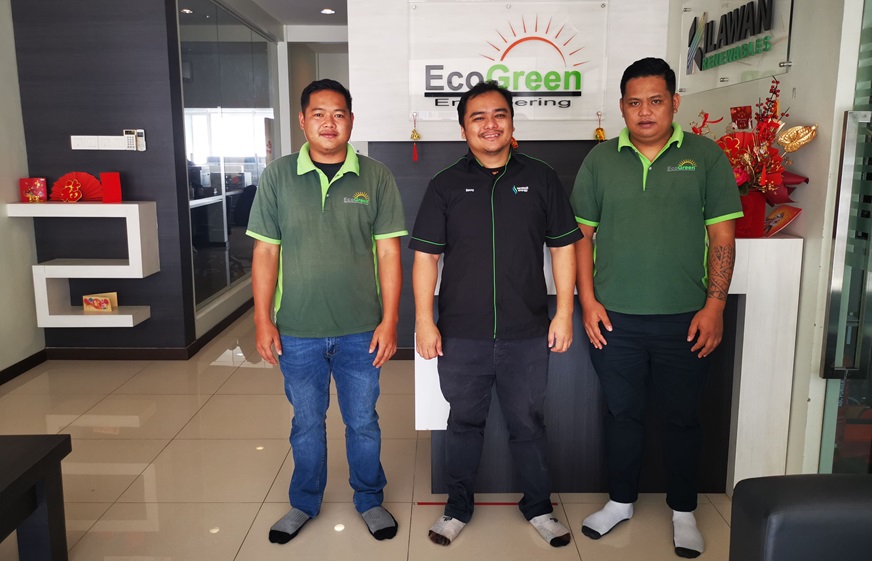
Photo Credit: Sarawak Energy Berhad
Using the 1.5°C Scenario, IRENA’s analysis shows that an ambitious energy transition will deliver a broad range of beneficial socio-economic outcomes for Southeast Asia. Read more from Socio-economic footprint of the energy transition: Southeast Asia.
